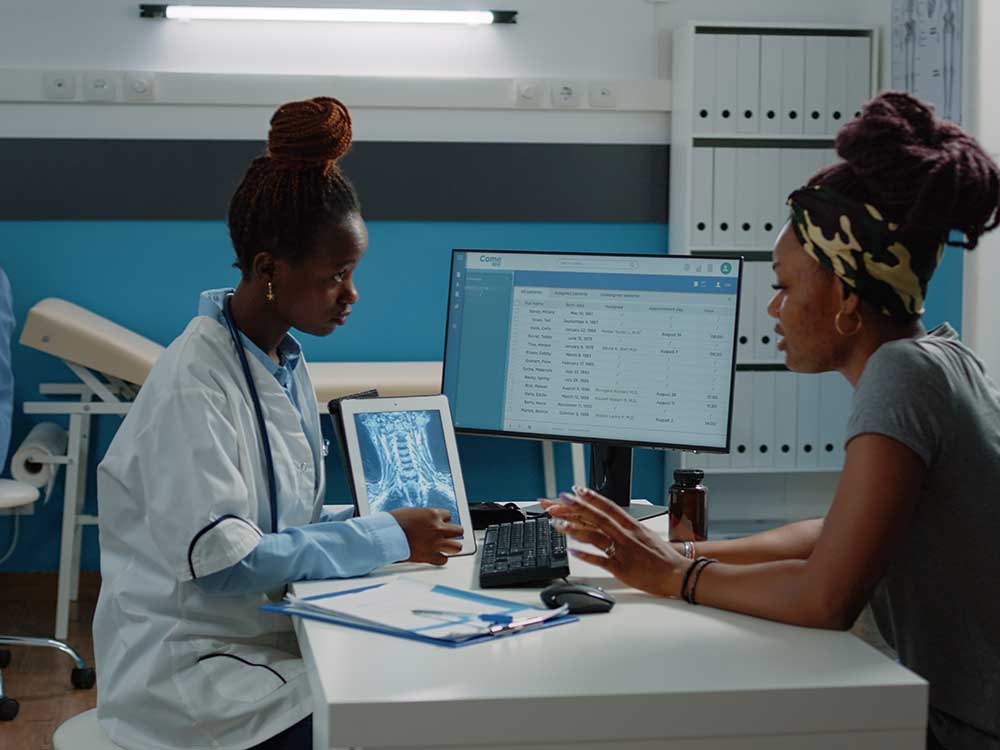Best Practices in Medical Administration for Improving Effectiveness and Lowering Expenses
In the ever-evolving landscape of health care, the pursuit of ideal practices in clinical management is paramount for enhancing efficiency and curbing expenditures. By incorporating advanced modern technologies such as electronic wellness documents and telemedicine, doctor can improve procedures and boost client treatment. However, technology alone is not a cure all; enhancing resource allocation and cultivating collaborative communication amongst care groups are similarly essential (medical administration). As companies aim to balance quality and expense, what methods should be focused on to attain these dual goals? The solution to these inquiries hold the trick to a much more lasting medical care system.
Leveraging Advanced Modern Technology
In today's quickly developing health care landscape, leveraging innovative innovation is no more optional however crucial for reliable clinical administration. The assimilation of electronic solutions into medical care systems has actually changed the means centers run, simplifying procedures and improving client treatment. Electronic Wellness Records (EHRs) are pivotal, providing detailed person data that can be accessed immediately by authorized personnel, thus minimizing redundancy and lessening errors. By systematizing individual information, EHRs get rid of the demand for difficult documents and facilitate smooth interaction among health care suppliers.
Telemedicine is an additional technological development that has actually transformed person interaction. It offers convenience for both individuals and medical care experts by enabling remote assessments, which can decrease the demand for in-person gos to and optimize consultation scheduling. Furthermore, telehealth systems can prolong medical care accessibility to rural or underserved locations, linking gaps in treatment shipment.
Additionally, the usage of Artificial Knowledge (AI) and machine knowing is becoming significantly prevalent in anticipating analytics, enabling very early discovery of prospective health issues and even more enlightened decision-making. These innovations, when integrated successfully, can boost diagnostic precision and individualize person therapy plans, ultimately leading to improved health care results and operational efficiency.
Optimizing Resource Appropriation
Reliable source appropriation is essential for optimizing the effectiveness of medical administration. By tactically handling sources such as workers, devices, and financial resources, health care facilities can dramatically enhance their functional performance, improve individual end results, and lower unneeded expenditures. The primary step in optimizing resource allowance entails carrying out a comprehensive evaluation of current assets and recognizing locations where sources might be underutilized or overextended. This analysis needs to be data-driven, making use of metrics and analytics to educate decision-making processes.
Focusing on source appropriation based upon client demands and solution needs is necessary. This entails straightening sources with high-demand locations, such as emergency treatment or specialized treatments, to make sure timely and reliable client care. Applying versatile staffing designs can additionally optimize labor sources by readjusting workers allocation in feedback to rising and fall person quantities. Additionally, welcoming telemedicine and various other technological solutions can alleviate physical source restrictions by supplying different methods for patient-provider communications.
Economic resources should be thoroughly kept track of and assigned with critical foresight to sustain both temporary functional needs and long-term institutional goals. This includes investing in training programs that improve staff competencies and taking on energy-efficient practices that decrease functional costs (medical administration). Ultimately, a maximized resource allocation approach cultivates a lasting medical go to my blog care environment that is responsive, effective, and economically sensible
Streamlining Process Processes
When healthcare facilities aim to improve functional performance, enhancing workflow procedures ends up being an essential emphasis. Efficient process minimize redundancy, get rid of unnecessary actions, and improve control amongst medical care professionals. This method not only speeds up solution delivery however also enhances the top quality of person treatment.

Next, innovation assimilation plays a considerable function in simplifying workflows. Implementing electronic health and wellness records (EHRs) and digital doctor order access (CPOE) systems reduces paperwork, decreases human error, and makes sure information is obtainable to all appropriate personnel. Additionally, leveraging telemedicine platforms can improve individual assessments and follow-ups, reducing the strain on physical facilities.

Eventually, structured process cause cost reductions and improved client contentment, cultivating a much more sustainable healthcare setting.
Enhancing Information Administration
Structure upon streamlined workflows, enhancing data monitoring ends up being a vital part ahead of time health care management. Reliable information administration systems are vital for maintaining accurate individual documents, boosting decision-making, and making certain compliance with governing standards. By applying robust data administration options, medical care facilities can enhance the top quality of individual care while all at once minimizing functional costs.
One key aspect of improving information monitoring is the integration of advanced digital wellness document (EHR) systems. These systems promote the seamless exchange of client details throughout different divisions, reducing replication of examinations and reducing errors. A well-designed EHR system sustains data analytics, making it possible for doctor to recognize trends and make educated decisions concerning individual treatment.
Furthermore, securing patient information is paramount. Taking on thorough cybersecurity measures, consisting of encryption and normal audits, guarantees the honesty and discretion of sensitive details. This not just shields clients yet likewise keeps the establishment's credibility.
Buying staff training is one more crucial variable. Educating healthcare specialists on information management techniques boosts their capacity to effectively utilize modern technology, leading to improved patient outcomes. Finally, from this source improving data administration via sophisticated innovation and comprehensive training is vital for achieving performance and cost decrease in clinical administration.
Fostering Collaborative Communication
A crucial component ahead of time clinical administration is fostering joint communication amongst health care professionals. Effective interaction is extremely important for making sure smooth patient treatment, enhancing treatment outcomes, and lessening mistakes. By motivating open discussion and control across multidisciplinary teams, health care organizations can enhance their operational effectiveness and lower unnecessary prices.
Central to this strategy is the integration of interaction innovations such as digital wellness documents (EHRs) and protected messaging systems, which promote the quick exchange of important person info. These tools allow health care suppliers to accessibility and share information in genuine time, ensuring that all team members are informed and straightened in their decision-making processes. Additionally, routine group conferences and interdisciplinary rounds can better advertise a culture of partnership and responsibility.
Educating programs concentrated on boosting communication weblink skills are also vital. Eventually, promoting collective communication leads to enhanced health care distribution and cost financial savings.

Verdict
Including advanced innovation, such as digital health records and telemedicine, together with maximized resource allocation and structured operations processes, is vital for improving efficiency in clinical administration. Effective information management and cultivating collective interaction among medical care groups are vital for decreasing redundancies and boosting care quality. By prioritizing preventative treatment and taking part in high quality renovation efforts, medical care organizations can accomplish significant expense savings and enhanced individual outcomes, thereby ensuring lasting healthcare shipment in a significantly complex setting.